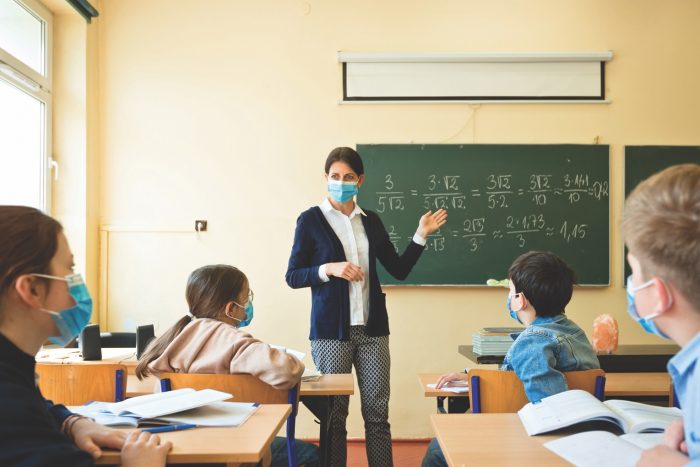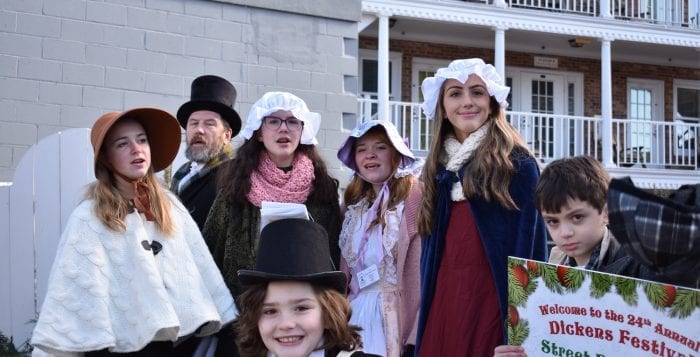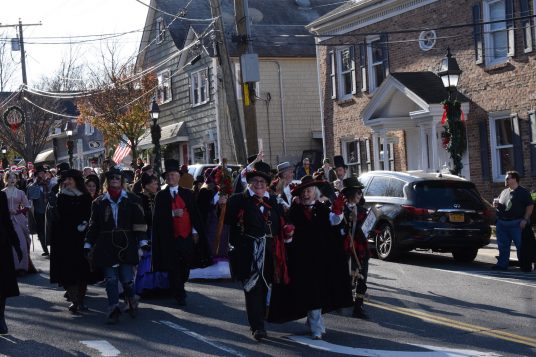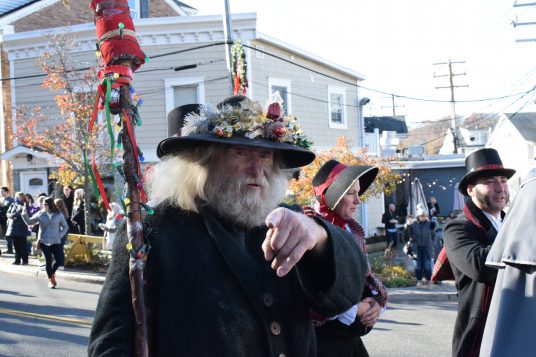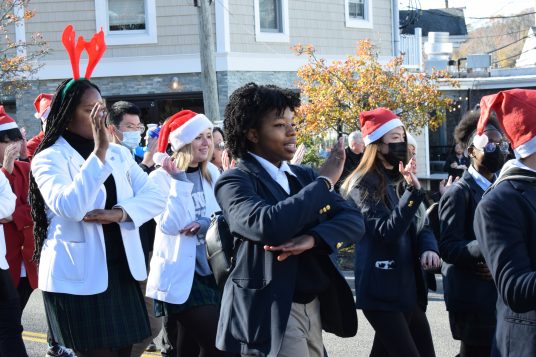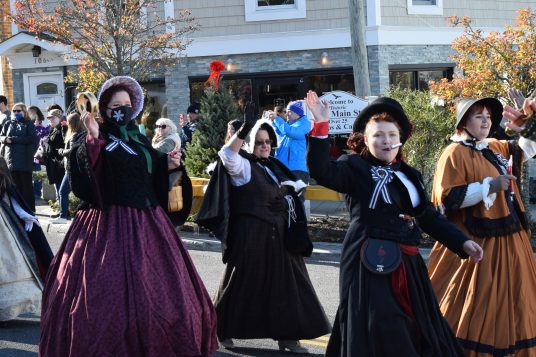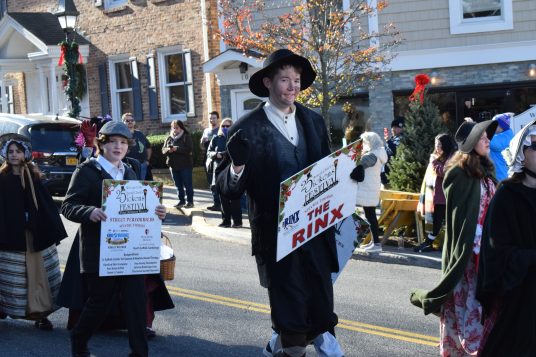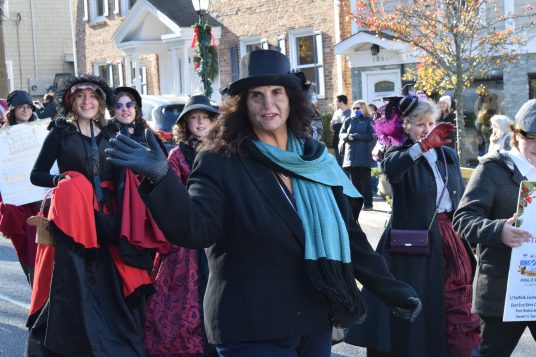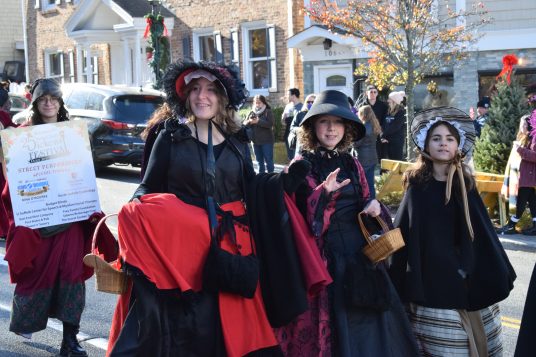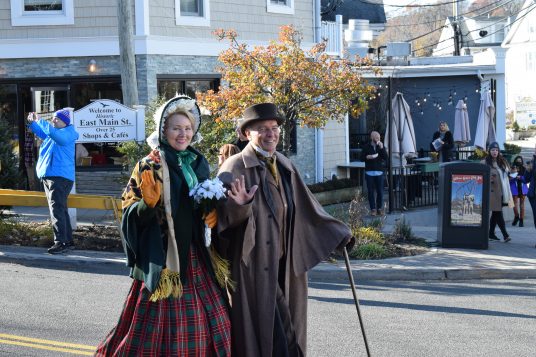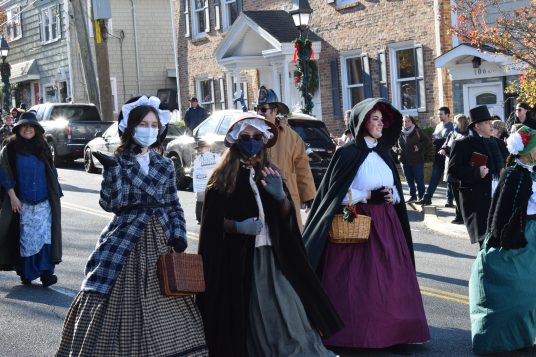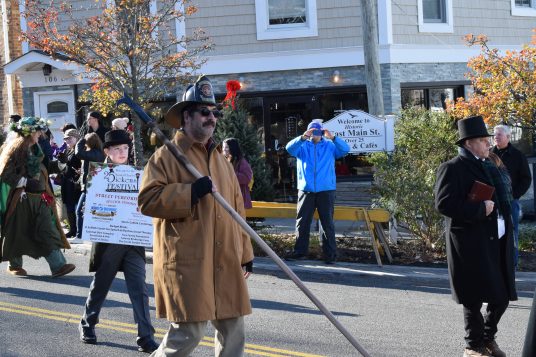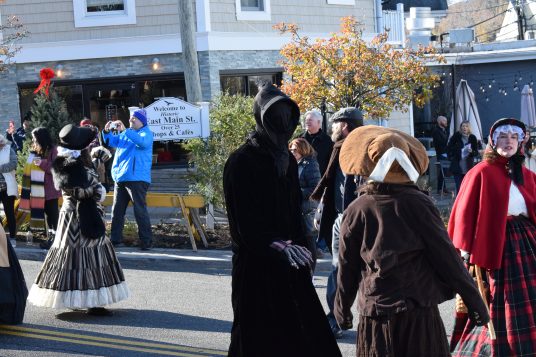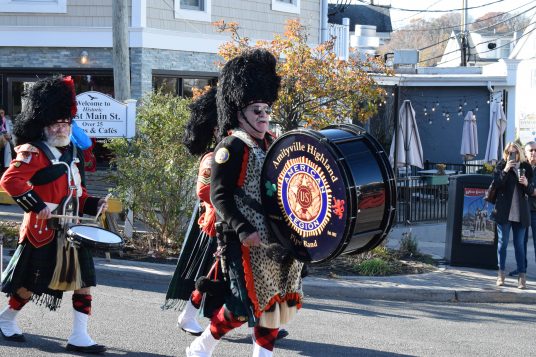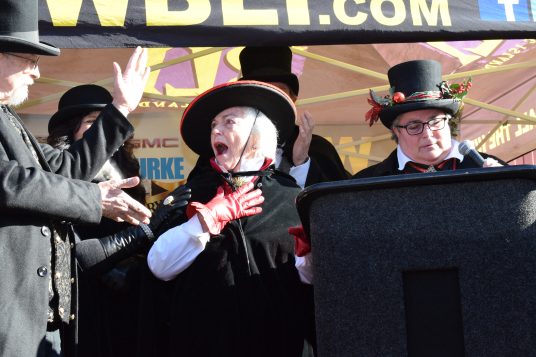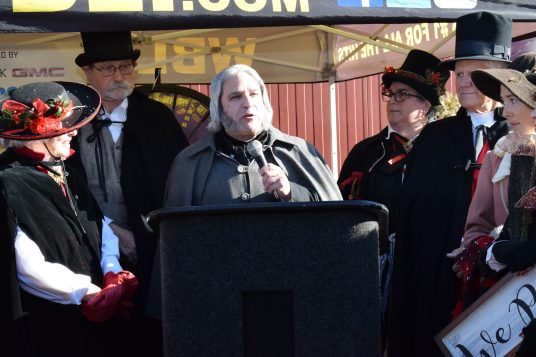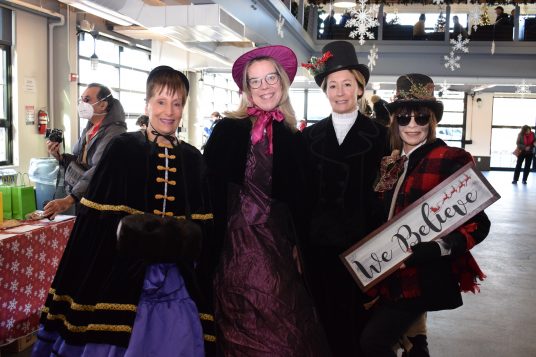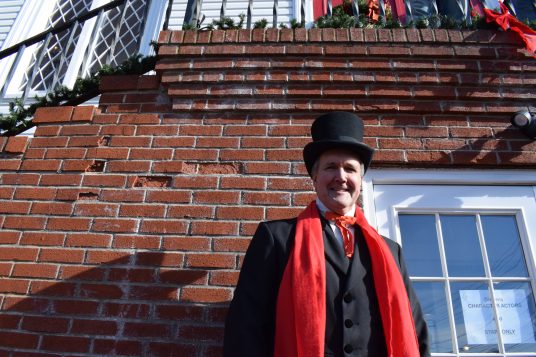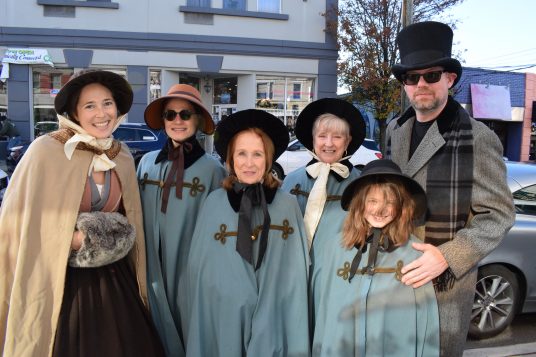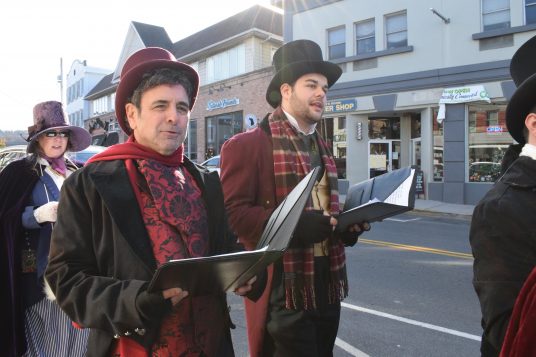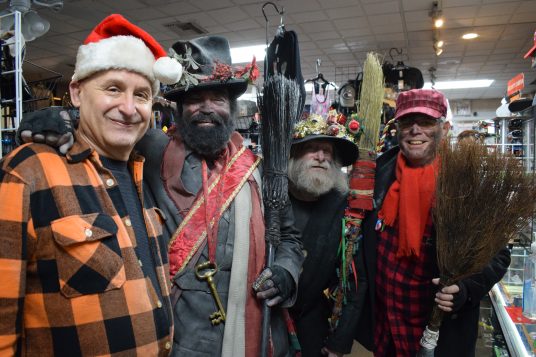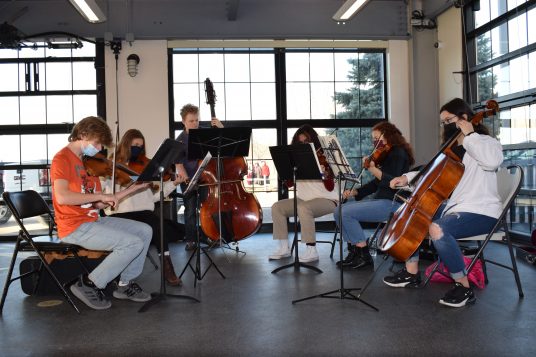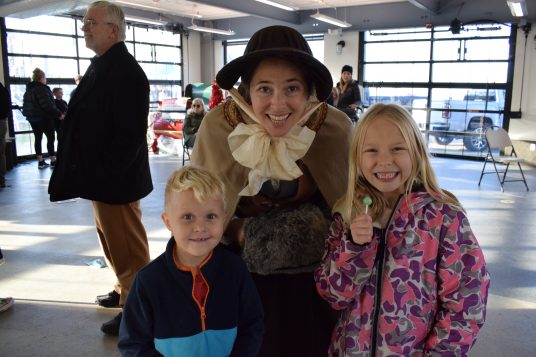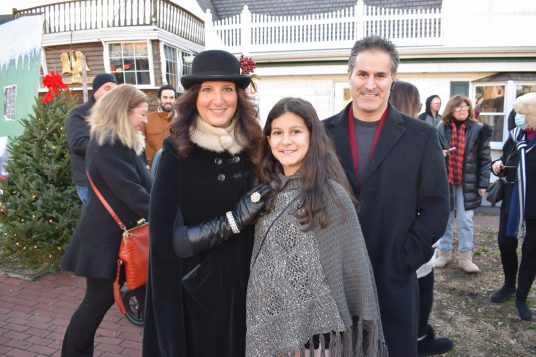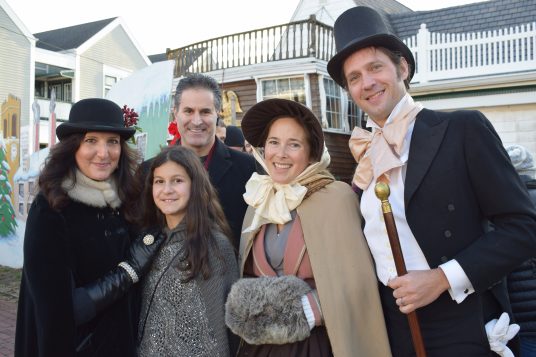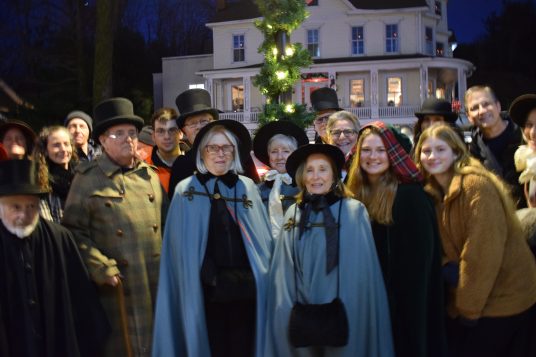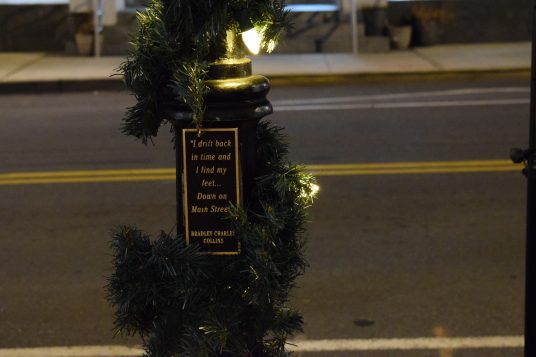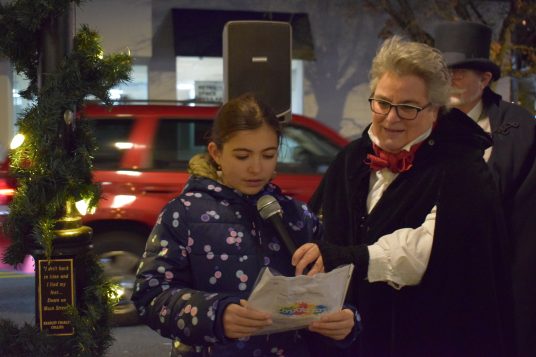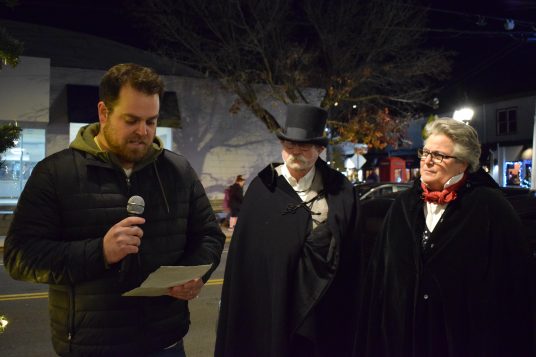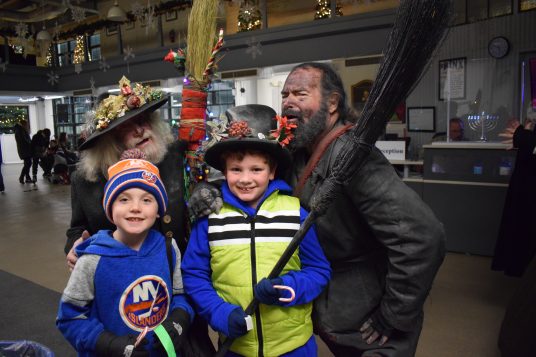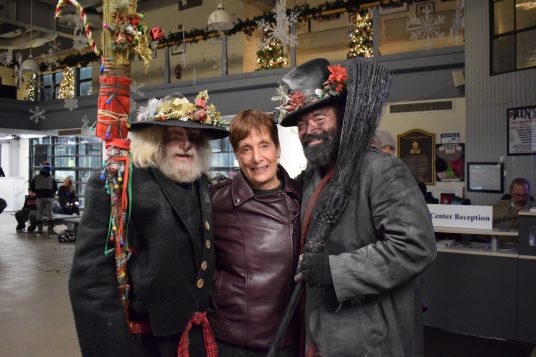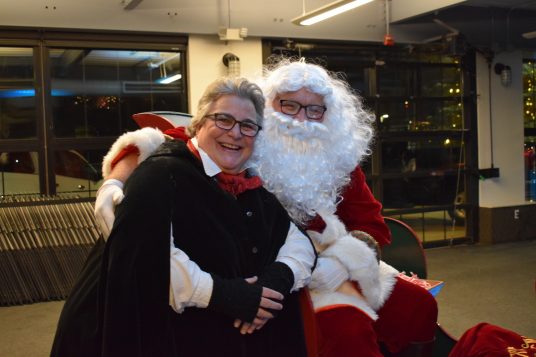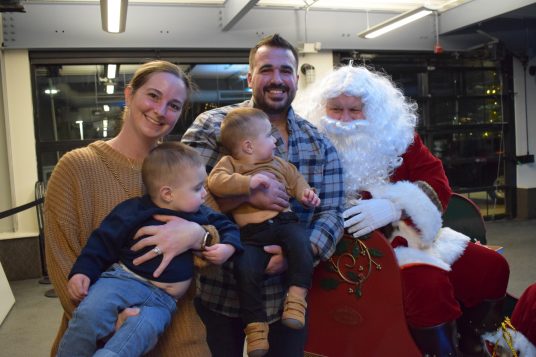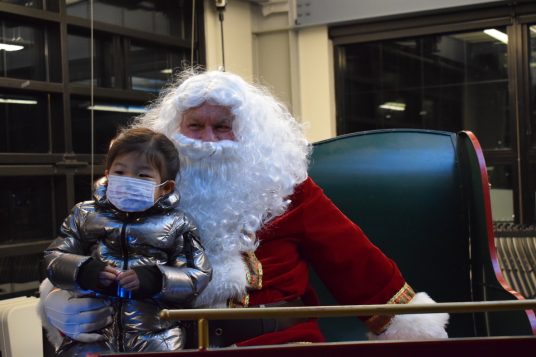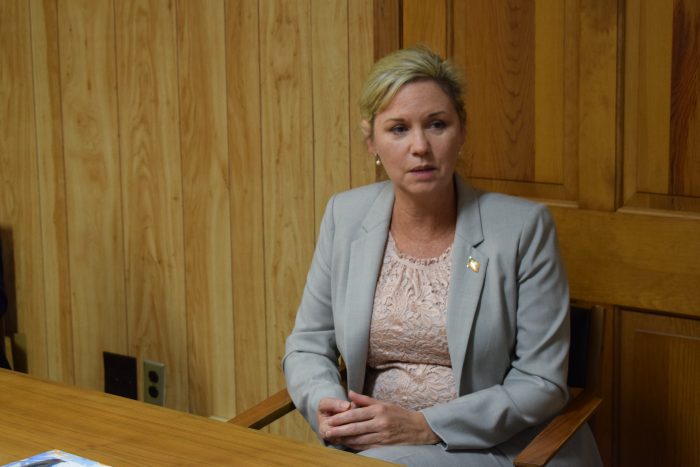It’s back!!! The Three Village Holiday Electric Parade returns to Setauket on Sunday, Dec. 12 at 5 p.m. Celebrating its 25th year, the parade will take place along Main Street/ Route 25A and feature festive holiday floats to kick off the season. Presented by the Stony Brook Rotary Club, this year’s Grand Marshal will be David Prestia. The Setauket Firehouse will host pre-parade festivities at 4 p.m. with music and performances by Ward Melville High School Students and Shine Dance Studio with complementary cookies, hot chocolate, candy canes and glow sticks. Visit 3Vholidayparade.com for further information.
Yearly Archives: 2021
Some North Shore school districts experience faculty shortages
This year as students returned to the classrooms full time, school officials are facing problems hiring enough faculty members.
Even before the pandemic, organizations such as New York State United Teachers, known as NYSUT, addressed the decline of people enrolling in the state’s teacher education programs. According to its website, enrollment has declined by more than 53% since 2009.
Gary Dabrusky, Three Village Central School District assistant superintendent for human resources, said the district “has experienced a shortage of teachers, which is reflective of regional and state trends.”
He said there has been a general decline in “the number of employees who have chosen to seek employment in the educational field. This includes areas such as tech, family and consumer science, global languages, substitute teachers, monitors, aides and food service workers.”
Smithtown Central School District is also experiencing shortages of certified and noncertified staff members, according to Neil Katz, assistant superintendent for personnel. In the Cold Spring Harbor district, Superintendent Jill Gierasch said her schools are also among the ones facing hiring issues. The superintendent said while they haven’t had major problems with their teaching staff, finding substitute teachers, special education and library aides has been a challenge for the district that has 1,700 students, which she added is small compared to others.
“We even increased the salaries to try to draw more folks for the first time,” she said.
Reaching out
Gierasch said while they have advertised in local publications, the district has also taken out ads in The New York Times “to try to spread our scope.”
Dabrusky said he “created a human resources Facebook page to help cast a wider net in an effort to reach a greater number of potential candidates.” The search has also led to the Three Village assistant superintendent revamping the human resources tab on the district’s website and using other sites such as the BOCES online application system, SchoolFront and Indeed.
In addition to online and social media, Katz said the Smithtown district also seeks “new and creative ideas on how to promote our vacancies in an effort to attract the most highly qualified candidates to join our staff.”
He added recommendations are also welcomed.
“While many online sources attract candidates, referrals from current staff are also very helpful,” he said. “The use of virtual interviews has also allowed us to meet with candidates from a farther distance more easily and to interview more candidates quicker in order to expedite our onboarding process.”
Solutions
Katz said the district has been utilizing all staff members.
“Many part-time aides are working double shifts and covering various positions as lunch monitors and classroom aides,” he said. “We have hired a number of full-time aides to provide the necessary support. Teachers are covering classes during their lunch and preparation periods. Other certified staff are providing coverage in classrooms, as necessary.”
Gierasch said the Cold Spring Harbor district has put together skeleton crews to ensure each space is covered. In the past, for example, when the school librarian would go to lunch an aide would cover the break. Now, the library is closed during the librarian’s lunch period.
The superintendent said they have also looked at the IEP [individualized education program] aides for students who need them to see if they require someone for all periods or just certain ones so they can adjust who the aides work with throughout the course of the day.
Dabrusky said Three Village has been resourceful in managing the shortage as he described student instruction and supervision to be of “paramount importance.”
“For example, in our elementary schools, every teacher volunteers for two coverage periods,” he said. “In the secondary schools, extra class coverage is offered to our teachers to cover a class during their lunch and preparation periods. In addition, we employ permanent substitute teaching staff, and human resources leadership has expended robust effort to recruit and maintain substitute teaching staff.”
Possible reasons
Gierasch said some of the faculty positions aren’t always high paying and many people take them for health insurance coverage. With COVID-19, she feels many are hesitant to take a position due to health concerns.
“I don’t think it’s just germane to school districts,” Gierasch said. “I think, in all industries, staffing is an issue.”
Dabrusky agrees that many may be reluctant to return to the field due to the health crisis.
Katz also pointed to the overall decline.
“It appears that fewer people are entering the profession and that has caused some difficulty with securing teachers in certain areas of certification,” he said. “The number of vacancies that are posted for school districts throughout NYS is much greater now than I’ve seen in years. There definitely seems to be a supply and demand issue.”
CSHL’s Pedmale, Rosado find key signal for plants growing in the shade
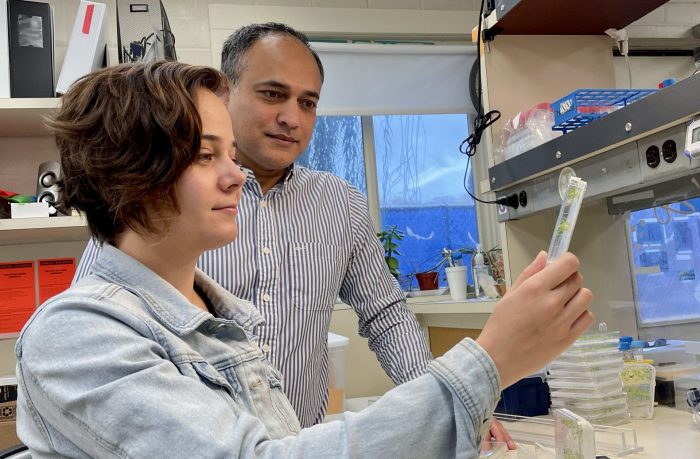
By Daniel Dunaief
Many plants are in an arms race akin to the developers of skyscrapers eager to get the most light for their prized penthouse apartments. Only, instead of trying to collect rent from well-heeled humans, these plants are trying to get the most sun, from which they create energy through photosynthesis.
Plants are so eager to get to the coveted sunlight that the part growing towards the light sends a distress signal to the roots when they are in the shade. While that might help an individual plant in the short term, it can create such shallow and ineffective roots that the plant becomes vulnerable to unfavorable weather. They also can’t get as many nutrients and water from the ground.
This is problematic for farmers, who want plants that grow in the sun, but that don’t sacrifice the development of their roots in the shade. Ullas Pedmale, Assistant Professor at Cold Spring Harbor Laboratory, is working to lend a hand.
Pedmale, who recently published research in the journal Plant Physiology, is studying the signals the shoots, or the parts of the plants either in the sunlight or the shade, send to the roots.
Pedmale and postdoctoral researcher Daniele Rosado, who is the first author on the recent paper, explored the genes that turned on in the roots of the model plant Arabidopsis and tomato plants when these plants were in the shade.
When plants are in the shade, they “prioritize shoot growth and try to outcompete the neighboring plants,” said Rosado. “That’s when root development is compromised.”
Among the genes that are active when plants are in the shade is a family of genes called WRKYs, which affect gene expression and cause stunted growth in the roots.
WRKY genes respond to stress. Keeping WRKY genes on all the time, even when a plant is in the sun, caused stunted growth of the roots. WRKY proteins turn on or off other genes.
This can be problematic for farmers, who tend to try to increase yield by putting more plants in an area. At that point, the plants shade each other, which is “bad for the root system. If we can find a way to get the roots to grow normally, we can potentially increase yield,” Rosado said.
This could also remove more carbon dioxide from the air and store it in the developing roots, helping to mitigate the effect of global warming. “Our study can give a roadmap on how to make longer, deeper roots,” Pedmale said.
At this point, researchers still don’t know how the plant transfers information about the amount of sunlight it receives in the green chloroplasts where photosynthesis occurs to the WRKY genes, which are in the nucleus.
Researchers have been studying the shade response in the shoots of plants for over five decades. They have not, however, focused as much attention on the effect of less sunlight on the roots.
“We want to tackle this problem,” Pedmale said.
WRKY genes are a generalized stress signal, which is not just involved when a plant isn’t getting enough light. They are also turned on during pathogen attacks, stress and amid developmental signals.
Indeed, plants in the shade that have turned on these signals are especially vulnerable to attacks. Caterpillars, for example, can eat most of a shaded plant because the plant is so focused on growing its shoot that its defenses are down.
When that same plant is in the sunlight, it is more effective at defending itself against caterpillars.
At this point, Pedmale doesn’t know whether these genes and signals occur across a broad species of plants beyond tomatoes and Arabidopsis. He and others are hoping to look for these genes in grasses and grains.
Pedmale is also searching for other signals between the shoot and the root. “Plants are masters of adaptation,” he said. “They might have redundant systems” that signal for roots to slow their growth while the shoots tap into the available energy to grow.
Plants may also have natural molecules that serve as brakes for the WRKY signal, preventing the shoot from taking all the available energy and rendering the plant structurally fragile.
A scientist at CSHL for five years, Pedmale came to the lab because of the talent of his colleagues, the reputation and opportunity at CSHL and the location.
Born and raised in Bangalore, India, Pedmale enjoys reading fiction and autobiographies and wood working when he’s not in the lab. He recently made a book shelf, which provides him with a chance to “switch off” from science, which, he said, is a 24-hour job. He has taken wood pieces from his workshop and brought them to PhD classes at CSHL, where he can show them plant biology and genetics at work.
Pedmale and his wife Priya Sridevi, who also works at CSHL, have a mini golden doodle named Henry.
A native of São Paulo, Brazil, Rosado is married to plant biologist Paula Elbl, who is the co-founder of a start up called GALY, which is trying to produce cotton in a lab instead of in a field.
Rosado is the first in her family to attend a public university. She has been working in Pedmale’s lab for two years and plans to continue her research on Long Island for at least another year.
Rosado knew Pedmale had worked as a post doctoral researcher in the lab of celebrated plant biologist Joanne Chory at the Salk Institute for Biological Studies. She met Pedmale at a plant conference, where she expressed an interest in his research.
Longer term, Rosado hopes her research has a broader impact.
“If I’m lucky, I’ll be able to see the fruits of my work being applied to make a difference and help feed people,” she said.
As for his work, Pedmale is eager to understand and use the signals from one part of a plant to another, given that the plant lacks a nervous system. “Once we can understand their language,” he said, “we can manipulate it to increase yield.”
Your Turn: Port Jefferson Dickens Festival extended through Dec. 18
By Allan Varela
 Welcome to Dickens in December! The 25th annual Charles Dickens Festival has been gently extended with activities on Saturday, Dec. 11 and 18. The Village will present two concerts per day, one in the Masonic Lodge and one in the Village Center’s Skip Jack room. The not-to-be-missed Festival of Trees will delight all those who visit the Village Center’s second floor and the streets will once again play host to a host of Dickens street characters.
Welcome to Dickens in December! The 25th annual Charles Dickens Festival has been gently extended with activities on Saturday, Dec. 11 and 18. The Village will present two concerts per day, one in the Masonic Lodge and one in the Village Center’s Skip Jack room. The not-to-be-missed Festival of Trees will delight all those who visit the Village Center’s second floor and the streets will once again play host to a host of Dickens street characters.
Saturday the 11th features Dave K at the Masonic Lodge at 1 p.m. and Sweet Melody Music Studio with the Blue Music Company and Sterling Sax at the Village Center at 3 p.m. Saturday the 18th features the Dorian Consort string trio at the Masonic Lodge at 1 p.m. with Songs of the Season returning at 3 p.m. in the Village Center. The concerts are free and masking up is highly recommended.
Come on down to say ‘happy holidays’ to our beloved Chimney Sweeps and hear caroling groups perform throughout the Village. The restaurants have all prepared a holiday repast, while the stores are ready to fulfill those special holiday gift requests. So, come one, come all — a splendid time is in store for everyone.
Allan Varela serves as chair for the Greater Port Jefferson-Northern Brookhaven Arts Council which hosts the Port Jefferson Charles Dickens Festival.
Huzzah! Dickens Festival comes back to Port Jeff
The 25th annual Charles Dickens Festival drew in hundreds with Port Jefferson village transforming into the Dickensian era last weekend.
After a halt in 2020 due to the COVID-19 pandemic, the community was able to travel back in time (again) decked out in their most festive attire.
“It’s just such a wonderful destination for the holidays,” said County Legislator Kara Hahn (D-Setauket). “It’s unique, it’s special and it’s great thing for businesses.”
Characters like the dusty chimney sweeps, Father Christmas, Dickens Mayor, the Town Crier and of course, Scrooge, performed on the village streets and posed for photo ops with visitors and residents, alike.
The festivities began on Dec. 4 at 11 a.m. with a parade down East Main Street, headed by village officials and former mayor Jeanne Garant and concluded Sunday night.
“We are so proud and grateful that we can bring back this great tradition to the village,” said Mayor Margot Garant. “Not only does it bring an economic boost to our merchants and kick off the holiday season, but it brings good will and merriment to all. I am proud to carry on this tradition and keep it alive in hearts for all near and far.”
— All photos by Julianne Mosher
Village kicks off Dickens weekend with lantern dedication, resident’s night ice skating
On Friday, Dec. 3, village officials gathered at two lanterns on Main Street to remember Nan Guzzetta and Bradley Charles Collins.
Across the street from her home and costume shop, a lantern was named for Guzzetta who passed away earlier this year.
Guzzetta was a well-known and beloved costumer who dressed local actors and was instrumental with her involvement in the Dickens Festival.
“I will always look up at that porch and wave to Nan every time I pass that building,” said Mayor Margot Garant.
The group then headed outside the Chase Bank on Main Street to honor Collins, who also recently passed away.
After the dedications, residents stopped into the Village Center for hot chocolate, cookies and ice skating. Santa also made an appearance on his sleigh for photos.
— All photos by Julianne Mosher
Anker wins reelection after mail-in ballots counted
Sarah Anker (D-Mount Sinai) will be back in her role next year as Suffolk County legislator for the 6th District.
This comes nearly a month after election night Nov. 2 where Republican candidate Brendan Sweeney was in the lead by nearly 1,200 votes, but absentee ballots were not accounted for at the time.
After a lengthy recount of ballots and a court review of the count, Sweeney called Anker to concede and congratulate her on reelection by 63 votes.
“If anyone ever says that their vote doesn’t count, I urge you refer to this race to show that even one simple vote can make a difference,” Sweeney said, thanking his supporters specifically in Mount Sinai, Miller Place, Rocky Point, Ridge, Terryville and Shoreham-Wading River.
“I’m thankful to my friends, family and supporters in those communities,” he said.
Sweeney added he knew from the beginning that the race would be tough going against a 10-year incumbent.
“We put up a good fight,” he said.
Sweeney, who is currently an employee with the Town of Brookhaven, will be leaving his position this month to work in the office of the expected incoming county presiding officer, Kevin McCaffrey (R-Lindenhurst).
“I’ll be in this business no matter what,” he said.
Anker said she is “very happy” with the results and relieved that the counts have been finalized.
“Now I can continue to work on the projects I’ve been facilitating,” she said.
Anker said that the anticipation of the results was stressful, but what kept her going was knowing her sister survived breast cancer.
“Right after the election after I lost, I learned she was doing much better,” she said. “It wasn’t until last week that I learned she’s now cancer free.”
She said that knowing her sister survived her battle was more important than thinking she might not win her campaign.
“It was a good diversion in understanding the priorities in life,” she said. “I’m very grateful.”
Medical Compass: Paleo vs. Mediterranean diets
Which diet has better cardiovascular outcomes?
By David Dunaief, M.D.

Despite the great strides we have made in the fight against heart disease, it is still the number one cause of death in the United States. Can we alter this course, or is it our destiny?
A study involving the Paleo-type diet and other ancient diets suggests that there is a significant genetic component to cardiovascular disease, while another study looking at the Mediterranean-type diet implies that we may be able to reduce our risk factors with lifestyle adjustments.
Most of the risk factors for heart disease, such as high blood pressure, high cholesterol, sedentary lifestyle, diabetes, smoking and obesity are modifiable (1). Let’s look at the evidence.
Do our genes matter?
Researchers used computed tomography scans to look at 137 mummies from ancient times across the world, including Egypt, Peru, the Aleutian Islands and Southwestern America (2). The cultures were diverse, including hunter-gatherers (consumers of a Paleo-type diet), farmer-gatherers and solely farmers. Their diets were not vegetarian; they involved significant amounts of animal protein, such as fish and cattle.
Researchers found that one-third of these mummies had atherosclerosis (plaques in the arteries), which is a precursor to heart disease. The ratio should sound familiar. It seems to coordinate with modern times.
The authors concluded that atherosclerosis could be part of the aging process in humans. In other words, it may be a result of our genes. Being human, we all have a genetic propensity toward atherosclerosis and heart disease, some more than others, but many of us can reduce our risk factors significantly.
I am not saying that the Paleo-type diet specifically is not beneficial compared to the standard American diet. Rather, that this study does not support that. However, other studies demonstrate that we can reduce our chances of getting heart disease with lifestyle changes, potentially by following a plant-rich diet, such as a Mediterranean-type diet.
Can we improve our genetic response with diet?
The New England Journal of Medicine published a study about the Mediterranean-type diet and its potential impact on cardiovascular disease risk (3). Here, two variations on the Mediterranean-type diet were compared to a low-fat diet. People were randomly assigned to three different groups. The two Mediterranean-type diet groups both showed about a 30 percent reduction in the risk of cardiovascular disease, compared to the low-fat diet. Study end points included heart attacks, strokes and mortality. Interestingly, the risk profile improvement occurred even though there was no significant weight loss.
The Mediterranean-type diets both consisted of significant amounts of fruits, vegetables, nuts, beans, fish, olive oil and wine. I call them “Mediterranean diets with opulence” because both groups consuming this diet had either significant amounts of nuts or olive oil and/or wine. If the participants in the Mediterranean diet groups drank wine, they were encouraged to drink at least one glass a day.
The study included three groups: a Mediterranean diet supplemented with mixed nuts (almonds, hazelnuts or walnuts), a Mediterranean diet supplemented with extra virgin olive oil (at least four tablespoons a day), and a low-fat control diet. The patient population included over 7,000 participants in Spain at high risk for cardiovascular disease.
The strength of this study, beyond its high-risk population and its large size, was that it was a randomized clinical trial, the gold standard of trials. However, there was a significant flaw, and the results need to be tempered. The group assigned to the low-fat diet was not, in fact, able to maintain this diet throughout the study. Therefore, it really became a comparison between variations on the Mediterranean diet and a standard diet.
What do the leaders in the field of cardiovascular disease and integrative medicine think of the Mediterranean diet study? Interestingly there are two diametrically opposed opinions, split by field. You may be surprised by which group liked it and which did not. Cardiologists, including well-known physicians Henry Black, M.D., who specializes in high blood pressure, and Eric Topol, M.D., former chairman of cardiovascular medicine at Cleveland Clinic, hailed the study as a great achievement. This group of physicians emphasized that now there is a large, randomized trial measuring clinical outcomes, such as heart attacks, stroke and death.
On the other hand, the integrative medicine physicians, Caldwell Esselstyn, M.D., and Dean Ornish, M.D., both of whom stress a plant-rich diet that may be significantly more nutrient dense than the Mediterranean diet in the study, expressed disappointment with the results. They feel that heart disease and its risk factors can be reversed, not just reduced. Both clinicians have published small, well-designed studies showing significant benefits from plant-based diets (4, 5). Ornish actually showed a reversal of atherosclerosis in one of his studies (6).
So, who is correct about the Mediterranean diet? Each opinion has its merits. The cardiologists’ enthusiasm is warranted, because a Mediterranean diet, even one of “opulence,” will appeal to more participants, who will then realize the benefits. However, those who follow a more focused diet, with greater amounts of nutrient-dense foods, will potentially see a reversal in heart disease, minimizing risk — and not just reducing it.
Ultimately, even with a genetic proclivity toward cardiovascular disease, we have confirmation that we can alter our cardiovascular destinies. The degree depends on the willingness of the participants.
References:
(1) www.uptodate.com. (2) BMJ 2013;346:f1591. (3) N Engl J Med 2018; 378:e34. (4) J Fam Pract. 1995;41(6):560-568. (5) Am J Cardiol. 2011;108:498-507. (6) JAMA. 1998 Dec 16;280(23):2001-2007.
Dr. David Dunaief is a speaker, author and local lifestyle medicine physician focusing on the integration of medicine, nutrition, fitness and stress management. For further information, visit www.medicalcompassmd.com.
Staller Center’s Instrument Petting Zoo visits Stony Brook Children’s Hospital
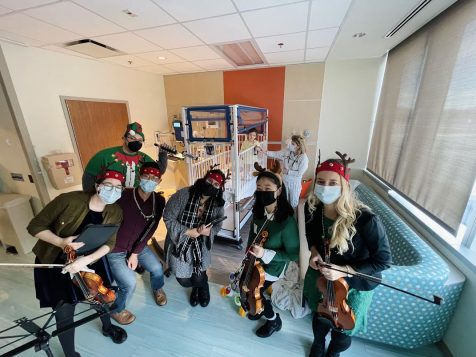

On Dec. 3, musicians from the Stony Brook Music Department’s Instrument Petting Zoo caroled throughout the Stony Brook Children’s Hospital spreading holiday cheer and joy to the children, families and staff, thanks to funding provided by Island Federal.
The Staller Center’s Instrument Petting Zoo is a program which helps the Staller Center for the Arts reach out to the community and share live interactive musical experiences for young people.
“To be able to spend time at the Children’s Hospital and see the smiles on the kids faces and the tears of joy in the parents eyes as the musicians performed holiday music was emotional, but we’re so happy we were able to come together and collaborate in this way,” said Paul Newland, the Staller Center’s Outreach Director. “We are grateful to Island Federal who helped provide the support for this initiative and we’re already planning more musical visits.”
Album Review: ‘Say It Ain’t Snow!’
Reviewed by Jeffrey Sanzel
Matt Hoffman’s debut album, The Start of Something Big, featured jazz and pop standards including “When You’re Smiling,” “What Are you Doing the Rest of Your Life?,” “Can’t Take My Eyes Off of You,” and the title song. He celebrates these favorites with his own terrific take. Hoffman has an effortless tenor that both soars and charms. Dropping in May 2019, it has since garnered over one million cumulative streams on Spotify, YouTube, and Apple Music.
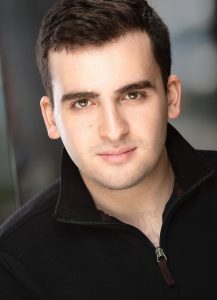
After receiving the Celebration Award from Michael Feinstein’s Songbook Academy Vocal Competition (held at the 3,500-seat Palladium Concert Hall), Hoffman performed with Feinstein at Manhattan’s 54 Below. He has sung at New York City’s Birdland, with The New York Voices’ Lauren Kinhan and Janis Siegel of the Manhattan Transfer. Hoffman made multiple appearances there for Jim Carouso’s “The Cast Party,” where the legendary Billy Stritch accompanied him. Additionally, he has been seen at New York’s Swing 46 as well as The Jazz Loft in Stony Brook.
Hoffman’s voice crosses many categories. His influences range from Harry Connick, Jr., to Frank Sinatra. Both contemporary and a throwback, he has a unique and vibrant sound. His blend of studio and theatre background splendidly colors his presentation, enhancing the beautiful vocals with a resonant emotional connection.
And now, Hoffman’s sophomore outing, Say It Ain’t Snow!, offers his personal flair on popular holiday fare. The seven tracks feature a wonderful range of material and boast a thrilling seventeen-piece Big Band with strings. The arrangements, by Trevor Motycka, are exceptional, perfectly matching Hoffman’s ability to shift from the grand to the witty to the heartfelt. There is the twinkle of holidays past—the spirit of the season of the great singers of television, vinyl, and CDs.
Say It Ain’t Snow! kicks off with an appealing, magnetic “This Christmas.” Hoffman’s knowing “It’s Beginning to Look a Lot Like Christmas” winks to so many fireside holiday specials. The Christmas Classics medley—“Here Comes Santa Claus,” “Let It Snow,” “Winter Wonderland,” and “Santa Claus Is Coming to Town”—shows an exceptional variety with seamless segues and a particularly exciting rendition of “Let It Snow.”
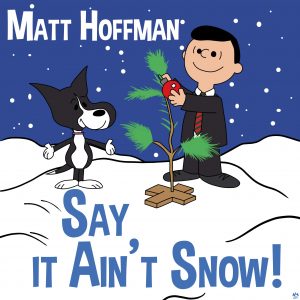 The sense of discovery in “The Christmas Song” is unique and surprisingly introspective. “Silver Bells” readily zings from a pastoral stroll in the snow to the lights of the city, showing off his jazz chops with masterful scatting. The simplicity and honest clarity of “O, Holy Night” is the perfect contrast to his letting loose with the final song, an exuberant, wry, “Run, Rudolph, Run.” In every number, Hoffman doesn’t just sing—he paints a vocal picture that is rich, evocative, and inviting.
The sense of discovery in “The Christmas Song” is unique and surprisingly introspective. “Silver Bells” readily zings from a pastoral stroll in the snow to the lights of the city, showing off his jazz chops with masterful scatting. The simplicity and honest clarity of “O, Holy Night” is the perfect contrast to his letting loose with the final song, an exuberant, wry, “Run, Rudolph, Run.” In every number, Hoffman doesn’t just sing—he paints a vocal picture that is rich, evocative, and inviting.
Returning as album producer is Jackson Hoffman, who partnered with Hoffman on The Start of Something Big. Jackson Hoffman produced and co-wrote 2020 Voice winner Carter Rubin’s latest single. Here, he has assembled exceptional musicians to create the overall sonic landscape, coupling the Big Band sound with the neo-Swing era music arrangements.
There are not enough accolades for the band, which swings with bold brass playing magically against the lush strings. The ensemble creates the ideal backing for Hoffman. Hopefully, Hoffman and company will continue to offer seasonal treats as well as a wide range of jazz, classical, musical theatre, and standard catalogs.
No holiday season is complete without Christmas music. Whether you are a fan of traditional carols or lean towards the contemporary, music inspires holiday cheer. Hoffman’s Say It Ain’t Snow! has something for everyone, with its warmth, sense of wonder, and real joy. It is a gift for this, next, and all the Christmases to follow.
Say It Isn’t Snow! is available on music streaming platforms including Spotify, Apple Music, iTunes, Amazon Music and SoundCloud.





